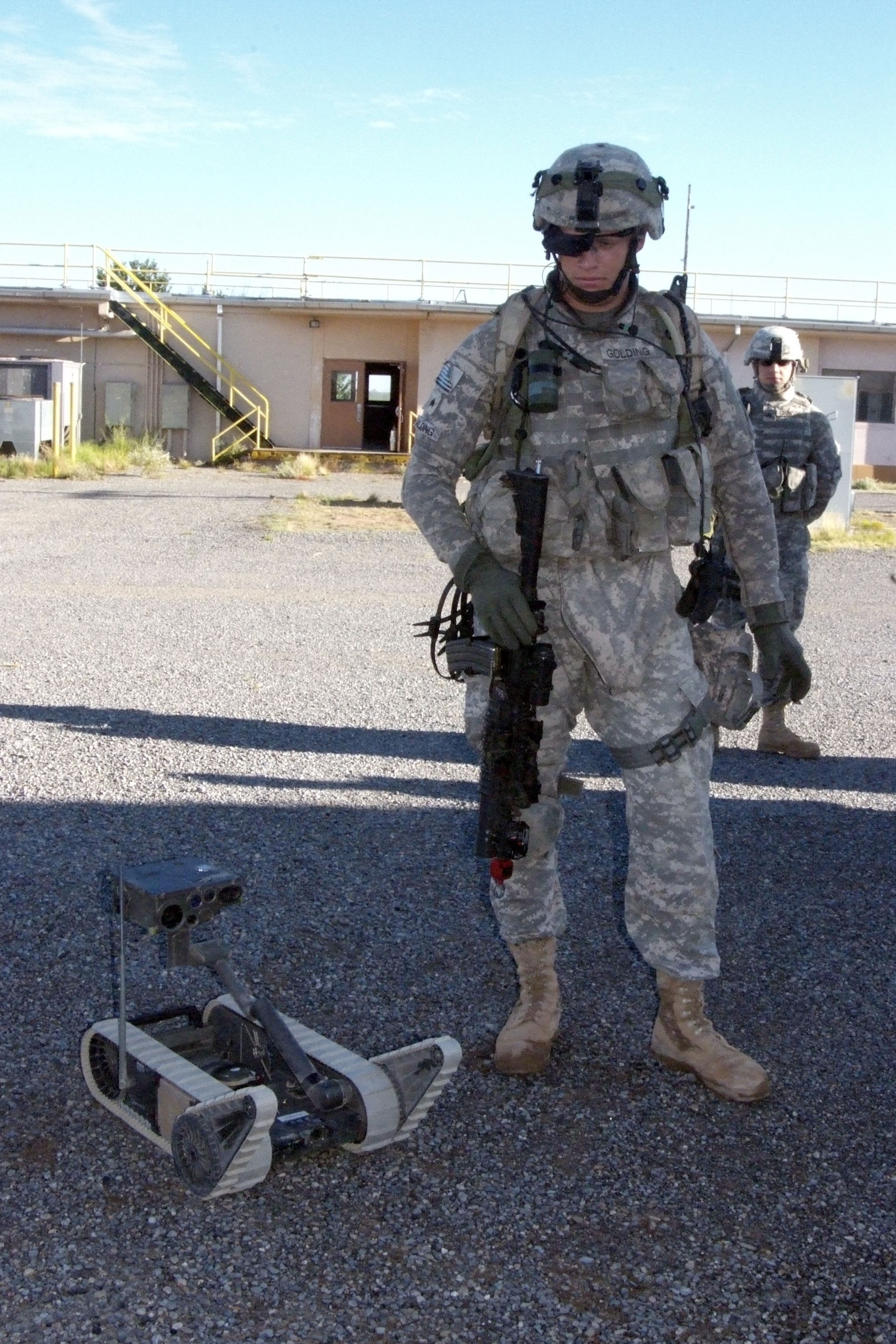WHITE SANDS MISSILE RANGE, N.M., Sept. 23, 2010 - White Sands Missile Range's expansive land and restricted airspace provided the perfect setting for a Limited User Test of the Early Infantry Brigade Combat Team Increment 1 Sept. 17 to evaluate systems tested on post.
Col. Steve Duke, with the U.S. Army Operational Test Command, Maneuver Test Directorate, said the purpose of the LUT was to provide data to assess the effectiveness, suitability, and survivability of the E-IBCT Inc 1 systems.
Duke said systems have to run a certain number of hours to determine reliability and the systems scored reliability during this test. "All systems showed significant improvement," he said.
The event included a tactical operation at C-Station, where scouts, Soldiers from the 5th Brigade, 1st Armored Division, Army Evaluation Task Force, conducted a realistic raid that required detailed planning and execution with the help of capabilities such as: the Tactical Unattended Ground Sensors, T-UGS; the Urban Unattended Ground Sensors, U-UGS; the Class 1 Unmanned Aerial System Block O; the Small Unmanned Ground Vehicle Block 1, SUGV BLK 1; and the Network Integration Kit, NIK.
The capabilities provide the following assistance:
T-UGS provided situational awareness to protect the force and provide early warning and intelligence.
U-UGS provided a leave-behind network-enabled reporting system for situational awareness and force protection in an urban setting.
CL 1 BLK O, provided an organic man-portable, unmanned hover and stare reconnaissance, surveillance, and target acquisition capability to the lowest echelon.
SUGV BLK 1 provided SA/SU and ISR to dismounts in urban terrain enabling the performance of manpower intensive or high -risk functions without exposing Soldiers directly to the hazard.
The Network Integration Kit, which is currently issued to Army Evaluation Task Force Soldiers at Fort Bliss, provides increased situational awareness and communications through advanced Network and communication settings. The NIK contains battle command software, the Integrated Computer System and the System-of-Systems Common Operating Environment. The Joint Tactical Radio Ground Mobile Radio is also being evaluated with the NIK.
According to information from OTC, Soldiers have successfully passed images from the Unattended Ground Sensors Systems to and from the NIK equipped vehicles.
Duke said the NIK is the brain of the system that helps protect our Soldiers. "There is no
replacement for American Soldier," he said.
Col. Dan Pinnell, with the 5th Brigade, 1st Armored Division, Army Evaluation Task Force, said they employed several systems in the demonstration, mimicking operations in Afghanistan, to isolate an objective and reduce their risk.
He said Soldiers are in a constant fight cycle with action and reaction in order to understand how the enemy fights. Although the scenario is different everywhere and every time Soldiers fight, the systems employed help lower the risk for Soldiers. He said they would rather lose a system, such as the SUGV, than lose a Soldier.
One of the questions they are trying to answer through these scenarios is, are the number of systems employed enough to do the job' And is the technology helping Soldiers accomplish their mission' Pinnell said most of the Soldiers playing have been deployed to Afghanistan and/or Iraq at one time, so a lot of the scenarios are very realistic. He said conducting these types of tests helps them understand utility and effectiveness of the systems.
Members of the media where then taken to Mountain Village West, where they were able to observe operations that include a simulated operational environment of an Afghan village.
1st Lt. Eric Muirhead, the cultural expert at Mountain Village, said they are trying to replicate the environment as much as possible. Muirhead plays the role of village religious leader, and as the religious leader he does prayers. "It keeps you in the mindset to make sure (the scenario) is tested to the full extent of realism," he said.
Role playing for long periods of time can often lead to exhaustion, so Soldiers have to remember to be respectful of the culture they are mimicking. Muirhead said one Soldier said it best when he said, "Have fun but don't make fun of it." "We are evaluating equipment that could save lives, and that is very important," Muirhead said.
In order to simulate operations to protect the population and increase local security capabilities Class 1 Unmanned Arial Vehicles, UAVs, can be seen flying over the village regularly.
Jay Hayden, Branch Chief of the Systems-of-Systems Branch at Material Test Directorate, said one of the benefits of conducting these operations at WSMR is that WSMR provides a controlled environment to include controlled air space; providing a larger area of operations and a variety of test areas.
A total of 385 Army, Department of the Army civilians, and contractors, and more than 800 Soldiers from the Future Force Integration Directorate Army Evaluation Task Force from Fort Bliss, Texas, participate in the event.
Duke said this is the third year of a four year campaign plan. He said they had problems with reliability last year but this year reliability of systems increased significantly.
Duke said they will now provide an Operational Test Report to senior Army leadership in support of an acquisition decision.


Social Sharing